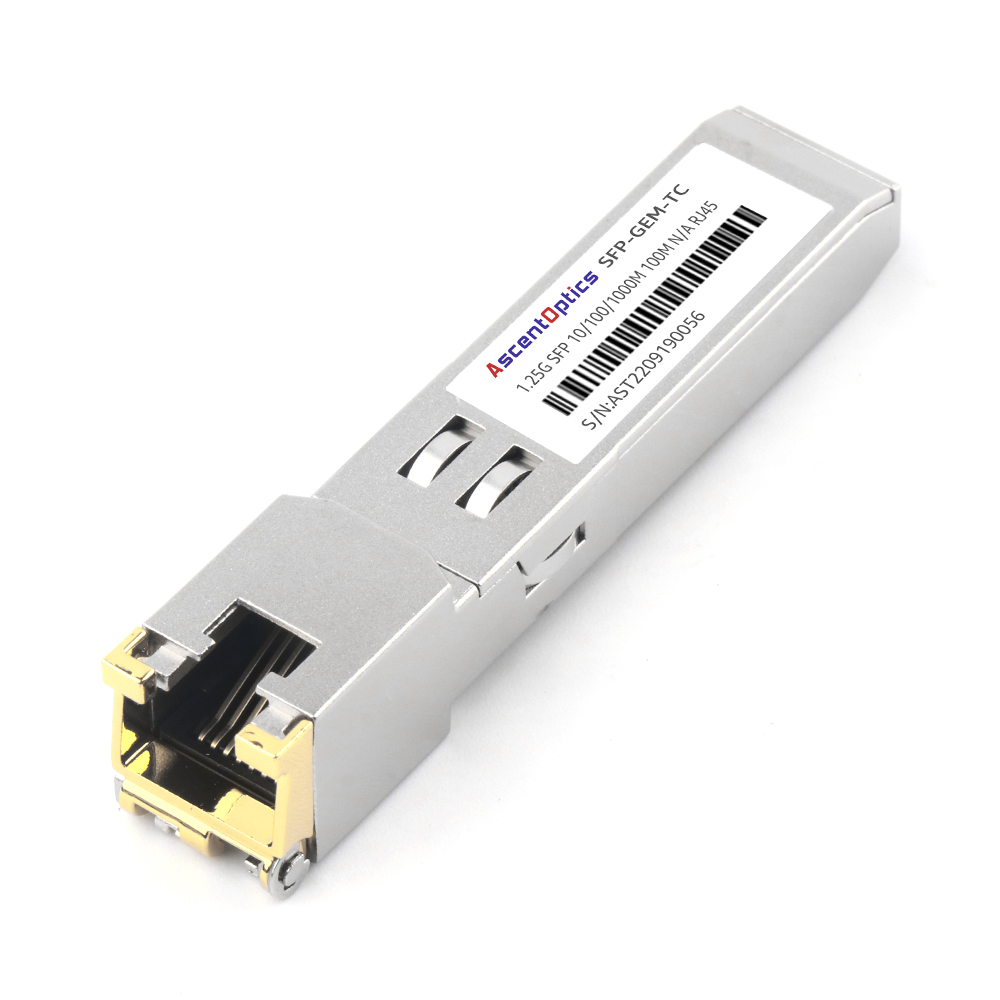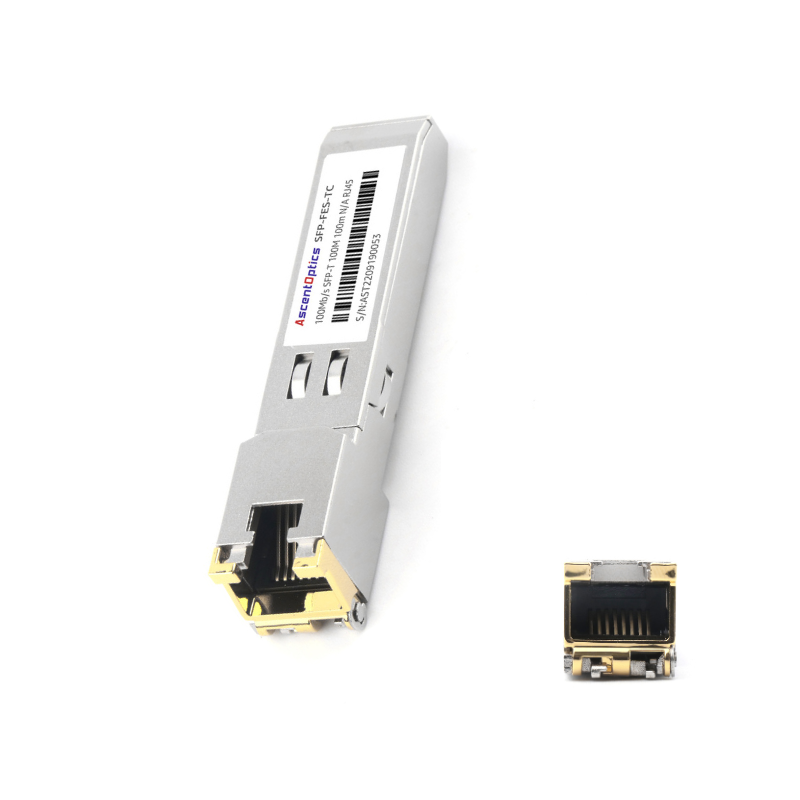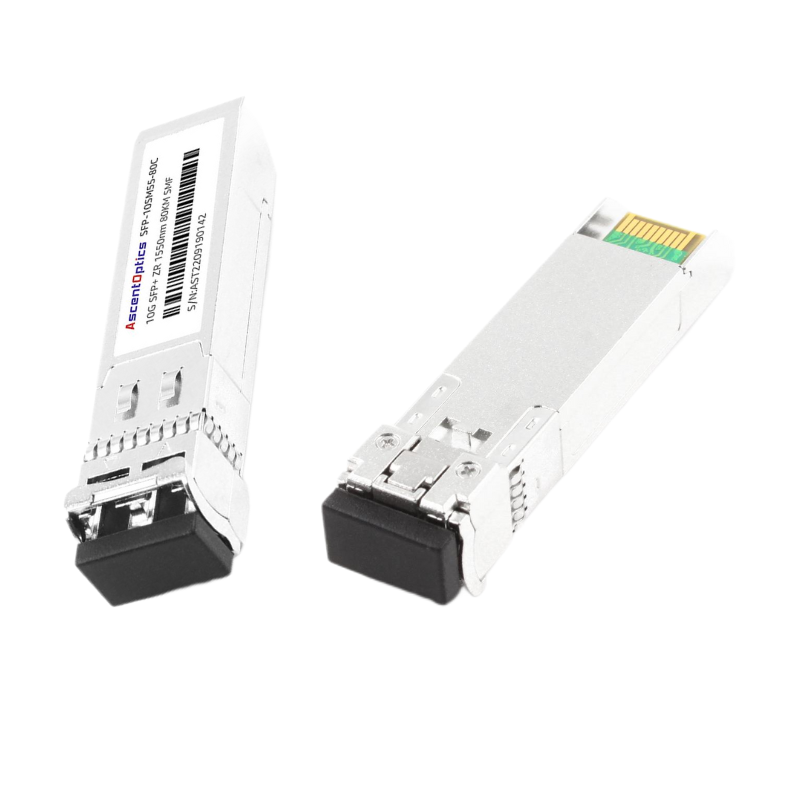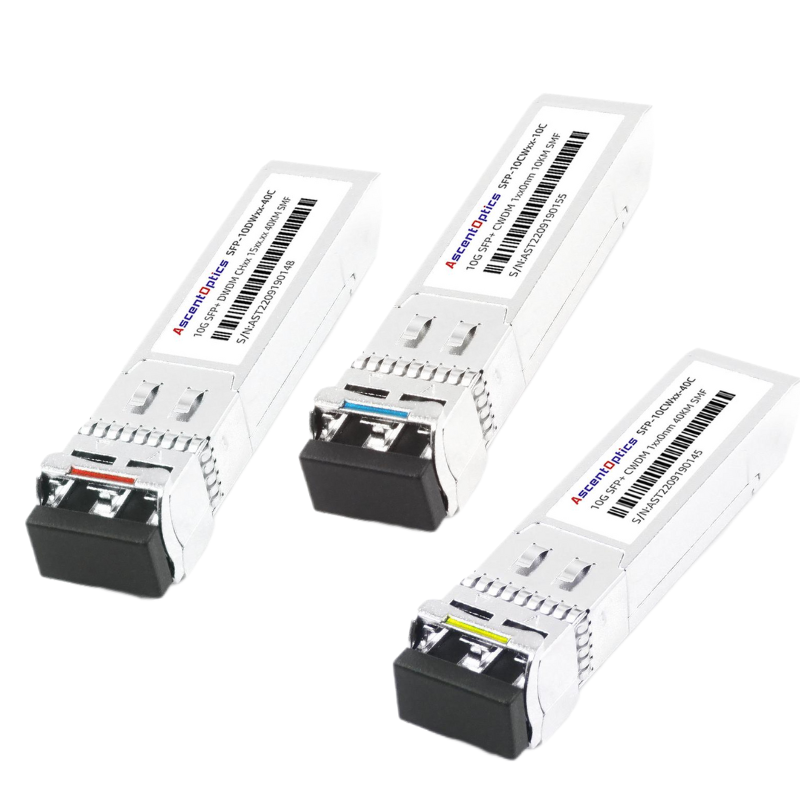Globally, companies and data centers are being changed by Gigabit Copper Small Form-factor Pluggable (SFP) Transceivers as they provide new ways for connecting devices. These little and flexible modules allow high-speed communication among networks using copper cables, which means one can have a large bandwidth without necessarily requiring fiber optic infrastructure. Improved operational efficiency is achieved when fast data transfer speeds are enabled by integrating gigabit copper SFP transceivers into your network, thereby creating reliable systems that can handle heavy traffic flow of information and applications with high demand. While upgrading an existing one or building a fresh network design, gigabit copper SFP transceivers remain effective options for reaching the best performance levels while still being economical.

In essence, Copper Small Form-factor Pluggable (SFP) transceivers are bridges connecting switches and other network devices through standard copper network cables such as Cat5e or Cat6 that enable high-speed data transfer. Instead of fiber optic alternatives, copper SFPs utilize already existing copper wiring infrastructure, which makes them cheaper for short-range data communication and networking.
There are a few core parameters that make this technology so widely applicable and efficient:
Understanding such parameters helps us realize how much flexibility and efficiency modern networks gain thanks to copper SFP transceivers. These gadgets should not only efficiently handle large amounts of fast-paced information across short spans but also do so while using the current network, thus making them very important components in small-scale as well as enterprise-level networks.
The 1000Base-T standard is very important in the current copper Ethernet networks as it enables gigabit speeds over standard Category 5 (Cat5) or higher-grade copper cable. Fast and reliable data transfer within local area networks (LANs) can only be achieved by this standard. It drastically cuts down on the cost and complexity of network upgrades by allowing for the reuse of existing network infrastructure. Also, Auto-negotiation is supported by 1000Base-T, which allows network devices to automatically adjust to the highest possible speed, thus optimizing performance without manual configuration. It has broad compatibility and operates up to 100 meters, making it work for both small office and enterprise networking environments where otherwise no other choice could serve well enough to ensure seamlessness and ease of use efficiency while setting up networks at different levels within an organization.
The networking world relies on two essential solutions: Copper Small Form-factor Pluggable (SFP) and Optical SFP, but they have different uses that cater to various networking environments and requirements. Here’s what you need to know:
Knowing these differences will help network administrators make informed decisions about expanding or upgrading their network infrastructure based on immediate costs versus performance requirements vis-à-vis future scalability considerations.

When integrating network hardware with SFP modules, ensuring compatibility is vital. Every manufacturer of network devices like Ubiquiti and HP designs their equipment to work with certain types of SFP transceivers, such as Cisco. Therefore, just because it fits into a slot does not mean any random module will function with your switch or router. To avoid network failure and other related issues, here are some factors that should be considered:
In addition to the above, one may also want to check whether there are any software updates available for his/her equipment which could affect compatibility before making any purchases. If still unsure about what particular type of SFP should work best within your network environment, then always consult with experts either from vendors themselves or through system integrators who deal directly with different brands on a daily basis – they will be able to provide necessary advice accordingly based upon their vast experience gained over time working in various projects involving similar kind of installations like yours.
It is necessary to know the Small Form-factor Pluggable (SFP) Multi-Source Agreement (MSA) in order for SFP modules to be integrated and work well with other parts of your network. This agreement describes the physical dimensions, electrical interface and signaling protocols that are required by SFPs from different suppliers to ensure that they can be connected together. When buying these devices, make sure they meet all necessary standards documented by MSA so that no matter what brand you use, everything will function properly with your equipment. Following this agreement also enables communication at different standards, baud rates, and distances without any compatibility problems, thus making network upgrades or expansions easier. Moreover, it guarantees troubleshooting should be done based on specified parameters as well as optimization of performance by ensuring all components operate within them.
If you want to add SFP modules to your network, it is important that you know what relationship there exists between port speeds and distance limits. Sometimes, higher-speed ports will require an SFP, which can support faster data transfer rates while having smaller maximum distances due to signal degradation over length. On the other hand, modules designed for longer distances usually operate at lower speeds because there is a tradeoff between them. This means that in the case of high-speed networks with long-distance communication requirements, either more advanced solutions should be considered or one of the aspects should be compromised on. Always evaluate the speed and distance needs of your network together when choosing appropriate SFPs for reliable and efficient setup configurations.

Before you place new SFP modules into your network devices, it is necessary to power down the equipment so as not to cause any potential electrical damage or data loss. This measure guarantees a secure environment for both the installer and the device during hardware upgrading.
Step 2: Check the SFP Module and Port
Thoroughly examine the SFP module for possible physical damages and verify its compatibility with your network requirements. In addition, inspect the port on your network device where the SFP will be plugged in to ensure cleanliness and the absence of dust particles.
Step 3: Put in the SFP Module
Take the SFP module by its sides and align it with a port on one’s network device. Softly slide an element into this slot till hearing clicking sound, which means that connection has been established securely. Don’t touch electrical parts neither optical connectors to avoid causing harm.
Step 4: Fasten Connection
If an SFP module possesses lock screws, then check whether they are well engaged because this will keep such elements tightly fixed within their positions. This stage is necessary because vibrations may lead to accidental removal or loosening of modules during handling.
Step 5: Power Up and Configure the Device
Switch on your networking equipment after securing installation of module(s). Depending on particular settings, you might have to configure either whole system or individual devices in order for them recognize these new modules hence optimize their performance accordingly. Configuration usually entails accessing management console of device through network management software.
Step 6: Confirming Installed
Once powered up and configured properly check whether given device detects/recognizes inserted (any) so far so good everything should work fine otherwise retrace back steps used until problem gets solved . It is advised that one should only rely upon status indicators available with diagnostic tools while confirming stable links between these two points together with expected operational parameters being met by each side involved.
Step 7: Documenting
In the end, document everything done including; type of SFP module used, device it was installed into, along with any other changes made during configuration. Such records will prove very useful when troubleshooting or performing maintenance/upgrades later own.
You can have an optimized and dependable network infrastructure by following through these comprehensive steps during SFP modules installation.
While setting up SFP modules, there are a number of common issues that may arise that can affect their performance and recognition by the network. We will discuss these issues below and provide solutions in a simple manner so that you can quickly fix any problems you come across.
1. SFP Module Not Recognized
2. Poor Network Performance
3. Link Flaps or Intermittent Connectivity
4. Overheating Issues
5. Incompatibility After System Update
Maintaining the optimal performance of your Copper Ethernet SFP Transceiver involves a few crucial practices. Regularly inspect your SFP modules and ports for physical damage and ensure they are clean and free from dust. Always check environmental conditions like temperature and airflow around the networking equipment to prevent overheating. Use only compatible SFP modules, especially after a system update; consulting the manufacturer’s guidelines can provide information on compatibility. Additionally, implementing a routine maintenance schedule and keeping a detailed log of changes, upgrades, or issues encountered with your SFP modules can significantly aid in troubleshooting future issues efficiently. Following these guidelines will help in preserving the integrity and performance of your Copper Ethernet SFP Transceiver.

While comparing Gigabit Ethernet (GbE) SFP Transceivers with 10G options, there are a number of key parameters that need to be considered, which directly affect the performance, cost, and scalability of your network.
In summary, whether you choose between using Gigabit Ethernet SFP Transceivers or going for ten gigabits per second rated device largely depends on what your organization requires at present in terms of budgetary allocation and expansion strategies. GbE offers cost-efficient solutions for small-scale applications while 10G transceivers provide higher performance levels needed for bandwidth hungry tasks as well as future growth potential.
The shift from Gigabit to 10G Copper Transceivers represents a significant development in network infrastructure, underscoring the need for faster speeds and wider bandwidths in modern applications. This change is designed to support more data-intensive workloads like cloud computing, high-definition video streaming, and large-scale enterprise applications. Here are some key reasons why 10G Copper Transceivers are necessary at this time:
To wrap up everything we have said above: Therefore adopting 10G Copper Transceivers is a strategic move which prepares networks for the future where data needs will be much higher. It seeks to create high-speed efficient scalable network infrastructures that can support the next wave of digital transformations.
The networking industry is being transformed by new technologies that have a big impact on Small Form-factor Pluggable (SFP) modules. Compatibility, performance, and cost-effectiveness are the areas most affected. SFP modules should change as data transmission speeds increase and network infrastructures widen to cater to growing digital requirements. This involves upgrading their support for data rates from the conventional 1G all through 10G towards adopting such standards like 10G Ethernet that were established later than them. In addition, there is a need for SFP advancements that will enable energy-saving protocols since the trend now is towards lower power consumption but not at the expense of performance improvement. Accordingly, every time fresh techs come up, it becomes necessary to consider whether or not they are compatible with existing systems, how efficiently they can work alongside other devices within an environment, and what economic implications might arise from using them, particularly in relation to current prices of different items used in networks today?

In today’s networks, the RJ45 Copper SFP transceivers have many benefits due to their flexibility and cost-effectiveness. They can be used with familiar RJ45 connectors and twisted pair cables which is good for communication over short distances as well as being compatible with existing network infrastructure without requiring large upgrades or changes. This means that they are easy to install and maintain, thereby reducing both initial and ongoing operational costs considerably. In addition to this, Copper SFPs allow for connections across different Ethernet speeds (from 10/100/1000 Mbps), thus eliminating the need for multiple types of transceivers in a network that needs to adapt itself based on data rate requirements. Moreover, their power consumption is relatively low compared to fiber alternatives, making them more attractive, especially when energy saving is considered critical in some scenarios. To put it briefly, if you want performance, value for money, and versatility, then look no further than RJ45 copper small form-factor pluggable modules because these devices tick all the boxes required by any decent manager responsible for maintaining his organization’s digital infrastructure.
Copper SFPs have proven to be effective and versatile in a variety of different network settings, showcasing their ability to meet the needs of modern networks that are constantly changing.
These examples serve to demonstrate why copper SFP transceivers can be a cost-effective choice for any network upgrade project. They have proven themselves capable of being deployed successfully in a wide range of environments, thus showing that they can flexibly adapt to different networking scenarios while still remaining affordable, energy-efficient, and operationally effective.
When it comes to network infrastructure upgrades, finding the right balance between cost and performance is very important. Cheap SFP coppers are a good example of this balance because they offer inexpensive solutions without compromising on quality or reliability. The ability to reuse existing copper cables as part of these modules can save a lot in terms of materials and labor costs. However, their performance has also been designed with the needs of modern networks in mind: high speeds and low latencies. This ensures that businesses and organizations that use them get maximum returns on investments made towards such undertakings. So economically efficient while operationally effective are these devices that anyone who wants stronger network functionalities at minimum expense will find them invaluable.
With these three sources, one can get comprehensive knowledge about Gigabit Copper SFP transceivers since both the technical and practical aspects of these devices have been covered. This is because, from the scholarly research done up to installation guides that are provided here, any reader will be able to gain insights that will help them unlock power connectivity using Gigabit Copper SFP Transceivers from reliable and informative materials like those available through FiberOptic.com, IEEE Xplore Digital Library etcetera.

A: A Gigabit Copper SFP Transceiver is a type of network transceiver module that connects network devices via an ethernet cable by plugging into an SFP slot in a network switch. It employs copper cable, usually with an RJ-45 connector, to support data transmission rates at 1000 base-t standards over short distances.
A: The main difference between them lies in the medium and connector type used for transmitting data. Gigabit Copper SFP Transceivers use copper cables and RJ-45 connectors to send information, while fiber optic SFPs use fiber optic cables and LC/SC connectors. Generally, Copper SFPs are recommended for shorter distances (<100m), whereas fiber optic ones can go much further.
A: Yes you can use any RJ-45 Ethernet cable with a Gigabit Copper SFP Transceiver, though it’s best to have at least Cat5e or higher grade cables to support 1000Base-T standard for maximum performance. Using better quality cables like Cat6 or Cat7 will give improved transmission quality and reliability.
A: Yes, but ensure that the transceiver module meets the specifications of the switch manufacturer’s requirements when they are installed into any SFP slot on such device; some vendors may also suggest utilizing their branded transceivers for guaranteed compatibility as well as enhanced performance levels too if need be.
A: The highest speed at which data can be transmitted by one gigabit copper SFP transceiver is 1000Mbps or 1Gbps over copper ethernet cables, which allows for video streaming among other activities that require wide bandwidth such as large file transfers or fast internet access across multiple applications.
A: The steps to follow when installing a gigabit copper SFP transceiver are straightforward. To start with, make sure that the network device is powered off. Secondly, push firmly but gently on the module until it clicks into place in the switch or router’s sfp slot for copper modules, then connect an ethernet cable using the rj-45 connector between this transceiver and another networking device. Finally, power up both devices, and they will automatically detect each other through these transceivers.
A: In general, it is recommended not to use 1000Base-T copper SFP transceivers for reliable data transmission at distances greater than one hundred meters (about football field length). If you need longer connections than this, consider fiber optic components since they support much farther distances without losing too many signals along the way.
A: For example, some reputable manufacturers include Ubiquiti UniFi UF-RJ45-1G (1G Ethernet) and 10Gtek 1.25G SFP-T (10G Ethernet) which have been known in terms of their reliability and functionality but always ensure compatibility with your network switch or router before buying any brand of these devices otherwise it won’t work well together.